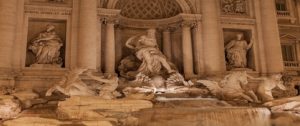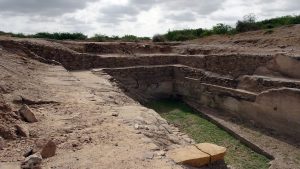Andaman and Nicobar Islands:
The land of India is blessed with picturesque islands surrounding her. One of them is Andaman and Nicobar Islands. Famously nicknamed ‘Kalapani’ these islands hold a lot in its heart. Captured multiple times, faught upon, suffered homicides, brutal and mass killings, natural disaster and many more. This archipelago located in the Bay of Bengal, a chain of islands comprising around 572 islands has many stories to tell. Rich in culture and natural heritage, its new nickname is ‘Mini India’, weaving new stories to tell with some old along with it.
Defining Andaman’s Natural Beauty:
The Andaman and Nicobar Islands boast breathtaking natural beauty. Pristine beaches with white sand and clear turquoise waters, vibrant coral reefs, and lush greenery create a picturesque landscape.
The islands are surrounded by diverse marine life, making them a haven for snorkeling and scuba diving enthusiasts. Coral formations at certain places, Mangrove trails, describe the Inland’s dense tropical forests housing unique flora and fauna, including indigenous species. The historical ruins, the iconic limestone formations of Baratang Island and the mud volcanoes of Shyamnagar add to the islands’ natural wonders. The overall beauty of the Andaman and Nicobar Islands makes them a popular destination for ecotourism and nature lovers.
Historical / Mythological aspects of the Islands:
While there isn’t a prominent mythology specifically associated with the Andaman and Nicobar Islands, some local folklore and tribal traditions contribute to the cultural richness. The indigenous tribes have their own myths and legends passed down through generations. These stories often involve spirits, animals, and natural elements, reflecting the tribes’ deep connection with nature.
However, one story stands out. The history of Andaman and its connection to the Ramayana, is primarily based on local legends and folklore as well. Even Though there is no concrete historical evidence or scholarly consensus on the events of the Ramayana and the Andaman Islands. Yet, with the minimal evidence found the story is convincing that it has some connection to it. The Ramayana is a revered epic in Hindu mythology, traditionally attributed to the sage Valmiki.
Come let us go through some interesting and popular legends.
1. Hanuman’s Visit to Andaman:
According to local folklore, it is believed that Hanuman, a central character in the Ramayana and a devotee of Lord Rama, visited the Andaman Islands during his quest to find Sita, the wife of Lord Rama. Some legends suggest that Hanuman rested on the island while on his way to Lanka.
2. The Naming of Radhanagar Beach:
Radhanagar Beach, one of the famous beaches on Havelock Island in the Andamans, is said to be named after Lord Radha, a character associated with Lord Krishna. While Krishna is not directly linked to the Ramayana, this naming choice reflects the intertwining of various Hindu mythological stories.
It’s important to note that these connections are more rooted in local traditions and oral history than in historical records or archaeological evidence. The lack of concrete evidence makes it challenging to establish a direct historical link between the Andaman Islands and the events described in the Ramayana.
For a more accurate historical understanding of the Andaman Islands, it is better to rely on documented records, including British colonial history, as the islands were part of British India. The indigenous people of the Andamans, particularly the various tribes, have a unique and separate history that predates colonial times.
Conclusion:
It’s essential to note that the history, mythology and traditions of the Andaman and Nicobar Islands is diverse, with different tribes and multiple communities having distinct beliefs. While not as extensively documented as mythologies in other regions, the Andaman and Nicobar Islands carry cultural narratives that blend with their unique biodiversity and geographical features.



